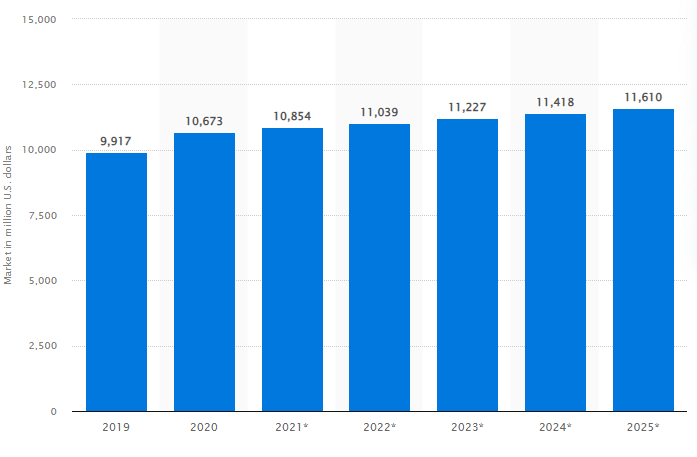
Schools deal with multiple parallel workflows and involve various interconnected stakeholders such as teachers, students, and administrative staff. While serving students with optimal education, schools also need to optimize the management of the institution's business side to better serve everyone, which necessitates the need for School Management Software (SMS) and systems.
With mounting competition in the education and e-learning industry, school systems need a digital solution enabling robust data management, the scope for scalability, and greater visibility across business functions. Investment in SMS systems is gradually becoming a must-have for schools in their journey to a more digitalized management of their functions.
In this article, we will talk about what goes into making a reliable SMS system and what schools can achieve from having one integrated into their workflow.
What is a School Management System?
School management software is a digital platform that allows academic institutions to manage their operational and administrative tasks efficiently. For educational institutions, this software has evolved into a crucial instrument for streamlining daily operations and increasing overall effectiveness.
The management of grades and report cards, scheduling and calendar management, student information management, and communication tools for teachers, students, and parents are a few of the key aspects of school management software. With the help of these features, educators and managers can efficiently manage and access vital data, interact with stakeholders, and automate administrative tasks like grading and attendance tracking.
The software can be viewed via a web portal or mobile application, enabling stakeholder collaboration and real-time data access. Teachers, students, and parents can view marks, attendance, and other crucial information in real-time with real-time data access, increasing transparency and improving decision-making. Per estimates by Statista, the global education software market size accumulated revenues of around 10.85 billion USD in 2021, while it is set to keep growing by over 200 million USD every year until 2025.

Image: Statista
School administration software can improve communication and transparency between teachers, students, and parents while saving time and decreasing administrative expenses. By giving students access to their grades and assignments from any location and permitting teachers to tailor their instruction based on student performance, it can also improve the learning experience for students. Overall, school administration software is a crucial tool for enhancing productivity, communication, and student outcomes in educational institutions.
How SMS Simplifies Work for the Administrative Staff
With an efficient SMS in place, the administrator can manage the operations of the school and also ensure timely communication between students, teachers, parents, and the administrative staff. Here are the various ways in which SMS systems simplify the administrative workflow:
1) Data Management: As most leading schools are switching from classical setups to digital classrooms, appropriate infrastructure needs to be in place to manage the associated data. SMS provides cloud storage facilities while ensuring that the data is stored with the utmost security features protecting it. It eliminates the need for maintaining physical servers on-premise.
2) Better Visibility: SMS enables better tracking of the overall process of knowledge delivery, educators' performance metrics, and student assessment. It provides greater visibility to educators and students as all the information regarding school events, tests, etc. can be broadcasted uniformly across the institution. An SMS system customized for the particular institution helps manage and optimize the ROI of the educational infrastructure.
3) Job Satisfaction for Teachers: The workload that a teacher would otherwise shoulder on their own can be shared with an SMS-based digital assistant or scheduling tool. Teachers can proactively track the performance of each student systematically across a comprehensive dashboard and develop periodic reports as well. Additionally, innovative teaching methods can be formulated for better lesson planning and delivery, while graphs and figures can help teachers pinpoint areas for improvement.
4) Resource Allocation: Traditional methods of resource allocation in terms of finances and teaching aids would lead to massive amounts of wasteful budget allocation, overburdens the existing school resources, and creates confusion among those responsible for resource allocation. Digitalization provides robust interfaces for managing and efficiently allocating funds toward specific curricular or co-curricular causes, salary disbursal to teachers, and management of inventory such as art supplies and sports equipment.
Key Components of School Management Software
Every reliable SMS system must have a set of features for it to prove useful for an educational institution in the long run. The following are some of the components that every SMS should have to facilitate any school's operational workflow:
Admission Process
The end-to-end process of tracking the student's journey all the way from enrolment to graduation is facilitated by SMS. The admission module can be utilized to set up filters and criteria for the initial assessment of potential students. Automating, streamlining, and simplifying the admission process by boosting the level of access to student data is the entire purpose behind leveraging SMS for this.
Fees Management
You will have less manual labor to complete because the top student management system manages all fees and payment procedures. It will allow your students to pay for classes online while giving you straightforward management options for the entire transaction. A school management system's fee management capabilities will manage everything digitally, doing away with the need for pen and paper, from invoice preparation to account and financial administration.
Continuous Assessment
The assessment of both students, as well as faculty on a regular basis, is essential to ensuring that quality education is being delivered. While there are several paper-based assessment methods, school management software can enable digitalized maintenance of exam records in addition to providing tools for monitoring the performance of the faculty. Over time, continuous monitoring can lead to optimal results for the educational institution's overall reputation and future intake.
Marketing and Branding
School management software can help with marketing and branding by providing a platform for schools to showcase their offerings and strengths to prospective students and parents. The software can enable schools to create visually appealing websites, publish social media updates, and send out email campaigns to reach a wider audience. Additionally, the software can help schools to manage their reputation by monitoring feedback and reviews from parents and students, which can be used to improve their offerings and address any concerns in a timely manner.
ALSO READ: EdTech Trends to Watch Out in 2020
SMS is Important for Digitalization in the Education Industry
Investing in school management software can revolutionize the way schools operate by streamlining tasks, increasing efficiency, and improving communication between teachers, students, and parents. From tracking attendance to managing assignments and assessments, the software provides a comprehensive solution to the administrative and academic needs of educational institutions.
Its user-friendly interface and customizable features can be tailored to meet the specific requirements of each school. Adopting school management software is a smart move for schools looking to stay ahead of the curve in the digital age and Daffodil Software's Software Development expertise can help you with just that. Begin your journey by booking a free consultation with us today.



